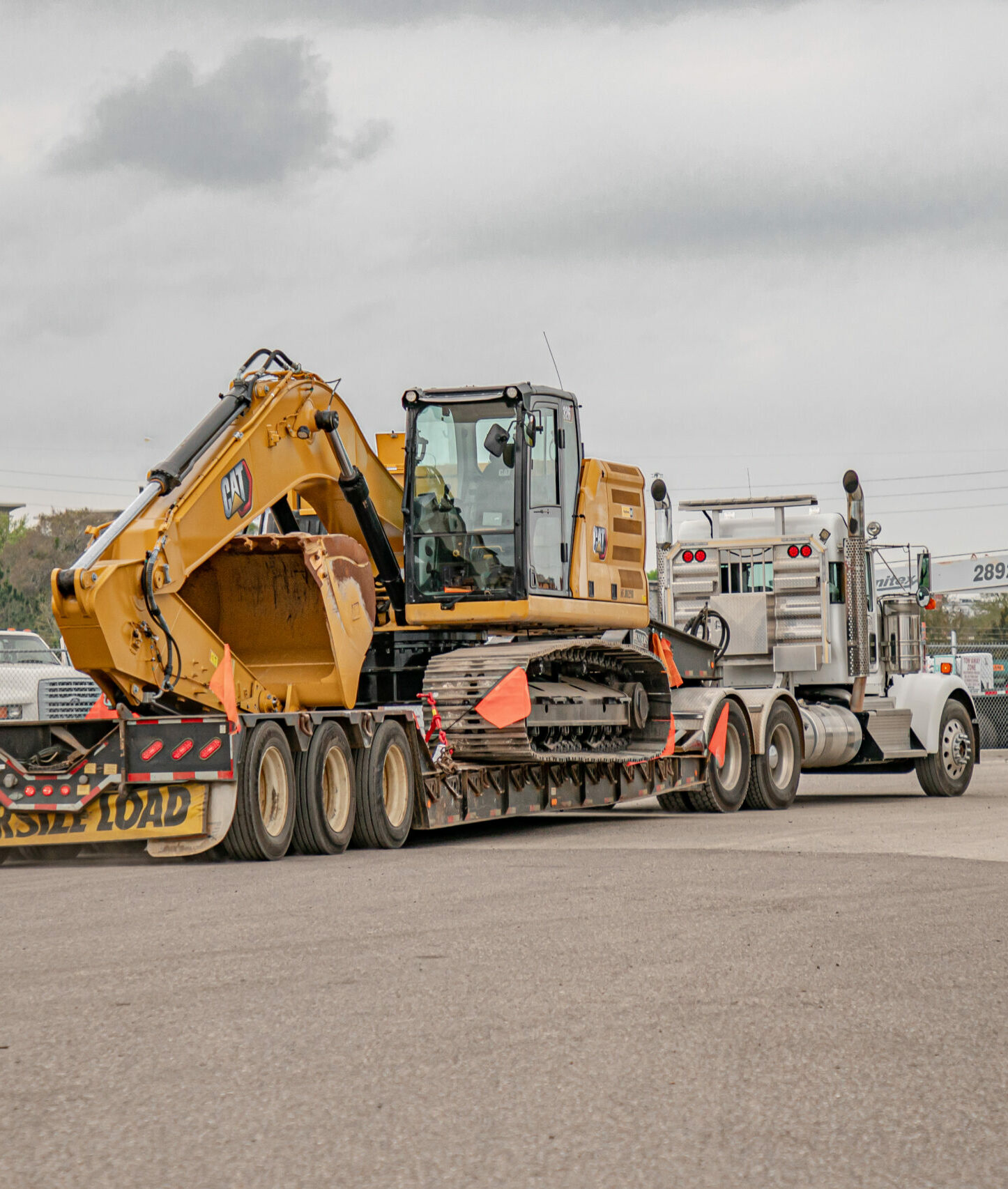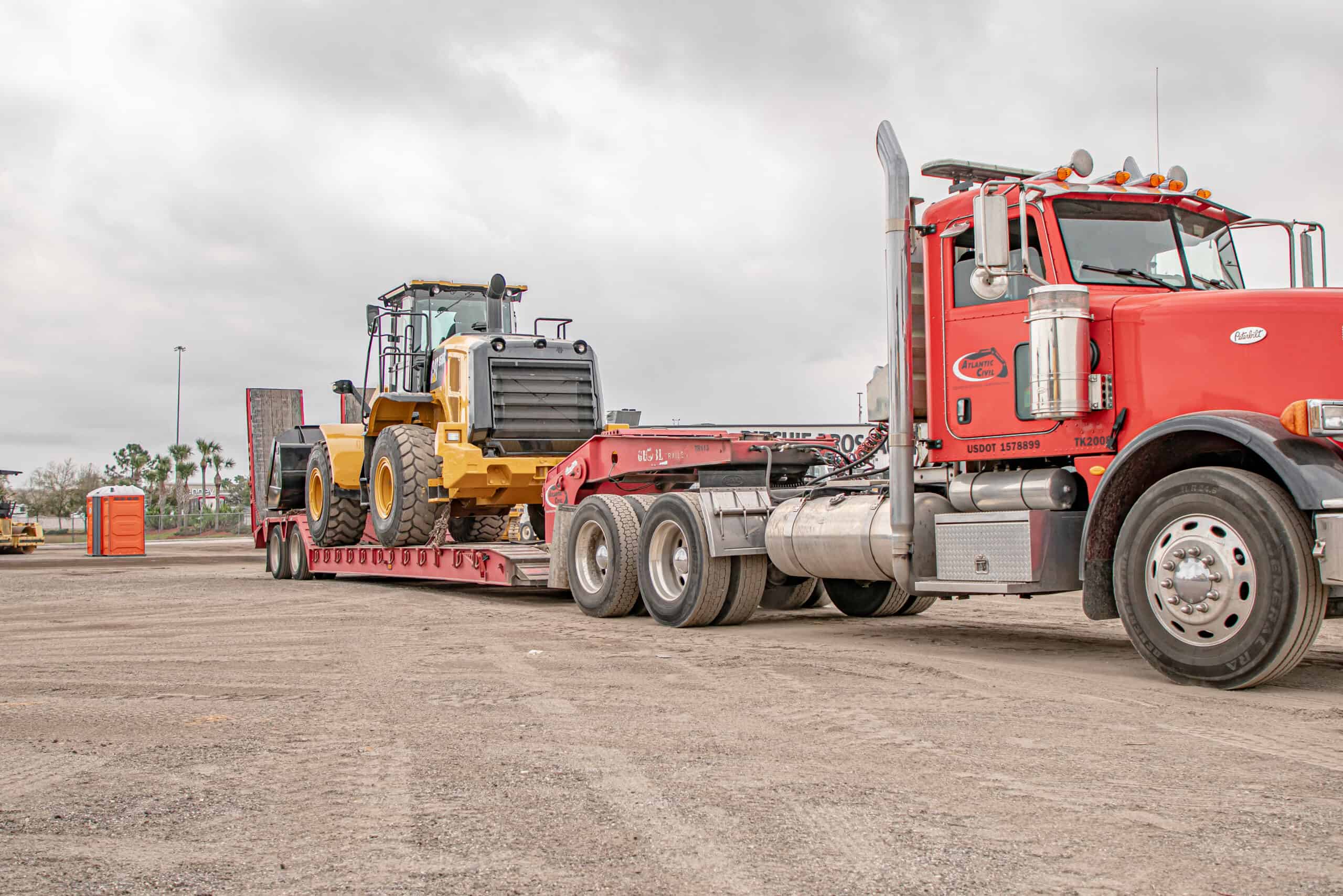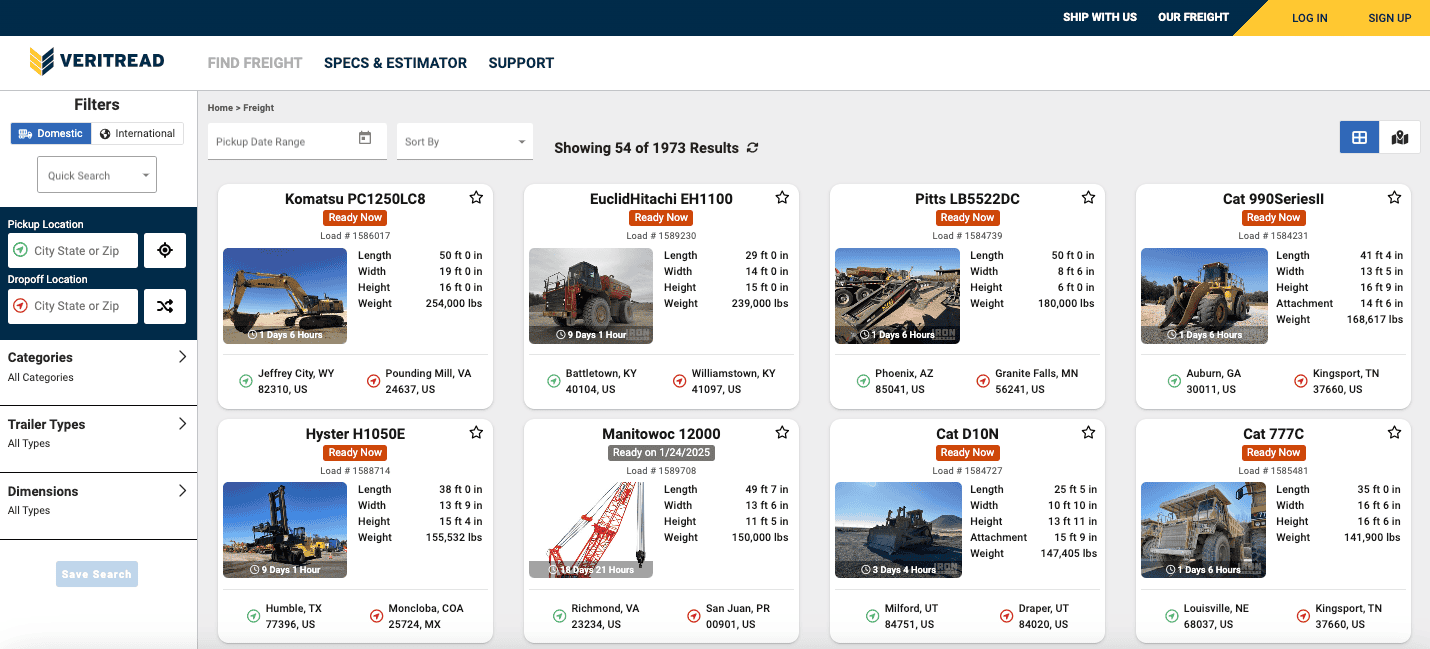Route Planning for Heavy Equipment Transport

Transporting heavy equipment is a challenging task that requires accurate planning and execution. Whether it’s moving construction machinery, industrial equipment, or oversized loads, the success of these projects hinges on one critical factor: route planning. A well-thought-out route plan can mean the difference between a smooth, on-time delivery and a costly, delayed project. In this comprehensive guide, we’ll delve into why route planning is essential for successful heavy equipment transportation projects. We’ll explore the key steps involved in creating an effective route plan, how transport companies leverage technology to optimize logistics, the role of local authorities and utility companies, and how businesses can minimize disruptions and delays. By the end of this article, you’ll have a solid understanding of the importance of route planning and the best practices to ensure your heavy equipment transport projects run smoothly.
Outline:
- Why Is Route Planning Essential for Successful Heavy Equipment Transportation Projects?
- What Are The Key Steps Involved in Creating an Effective Heavy Equipment Transport Route Plan?
- How Do Heavy Equipment Transport Companies Leverage Technology to Optimize Route Planning and Logistics?
- What Role Do Local Authorities and Utility Companies Play in Route Planning For Heavy Equipment Transportation?
- How Can Businesses Minimize Disruptions and Delays During Heavy Equipment Transport Through Proper Route Planning?
Why Is Route Planning Essential for Successful Heavy Equipment Transportation Projects?
Route planning is crucial for the success of heavy equipment transportation projects for a number of reasons:
- Safety: Heavy equipment is often oversized and can pose challenges on the road. Careful planning helps identify routes that can accommodate the dimensions and weight of the cargo, avoiding low bridges, narrow roads, or weak structures that could be damaged. This minimizes the risk of accidents and ensures the safe arrival of both the equipment and the crew.
- Efficiency: By planning ahead, transportation companies can choose routes that avoid traffic congestion, road closures, or delays. This not only gets the equipment to its destination faster but also helps to maintain project timelines.
- Cost Management: Proactive route planning allows for anticipating potential expenses. Permits, escorts, or even route changes due to unforeseen obstacles can be budgeted for beforehand. This avoids financial surprises and keeps the project within budget.
- Regulation Compliance: There are specific regulations governing the transportation of oversized or overweight loads. Route planning helps ensure that the chosen route adheres to all these regulations, preventing legal issues and delays.
In short, route planning is like a roadmap to success for heavy equipment transportation projects. It prioritizes safety, efficiency, cost-effectiveness, and ensures compliance with regulations, all of which are essential for a smooth and successful operation.
What Are The Key Steps Involved in Creating an Effective Heavy Equipment Transport Route Plan?
Here are the key steps involved in creating an effective heavy equipment transport route plan:
- Measure the Equipment: Before anything else, you need to know the exact dimensions (width, height, length) and weight of the equipment being transported. This will influence the type of trailer needed and restrictions on the route itself.
- Identify Permit Requirements: Depending on the size and weight of your equipment, you might need special permits to transport it on public roads. Research the regulations for your specific location and the entire route to determine any permit needs.
- Explore Potential Routes: Thanks to mapping tools and online resources, you can explore various route options between the origin and destination. Look for routes with wider roads, higher clearances, and minimal turns or obstacles.
- Prioritize Safety: While efficiency is important, safety should be the top priority. Choose routes that avoid low bridges, narrow roads, sharp turns, or areas with heavy traffic congestion. Consider using a pilot car for extra-wide loads to warn oncoming traffic.
- Consider Infrastructure Limitations: Pay attention to weight restrictions on bridges and roads along the route. Avoid routes with weak bridges or roads that cannot support the weight of the equipment.
- Develop a Contingency Plan: Even with the best planning, unexpected situations can arise. Develop a contingency plan that outlines alternative routes or procedures in case of road closures, accidents, or bad weather.
- Communicate the Plan: Clearly communicate the finalized route plan with all involved parties, including the driver, pilot car escort (if needed), and anyone else who needs to be aware of the transport schedule.
By following these steps, you can create a comprehensive and effective route plan that ensures the safe, efficient, and compliant transportation of your heavy equipment.
How Do Heavy Equipment Transport Companies Leverage Technology to Optimize Route Planning and Logistics?
Heavy equipment transport companies are embracing technology to take their route planning and logistics to the next level. Here’s how:
- Real-time traffic updates: Integration with live traffic data feeds allows for dynamic route adjustments based on current congestion or accidents, avoiding delays and optimizing travel time.
- Multi-stop route planning: For companies transporting multiple pieces of equipment or needing to make pickups along the way, route optimization software can create efficient multi-stop routes, minimizing backtracking and maximizing efficiency.
- Real-time location monitoring: GPS tracking allows companies to monitor the location of their vehicles in real-time. This provides valuable insights into driver behavior, adherence to planned routes, and helps identify any potential delays.
- Vehicle health monitoring: Telematics devices installed on vehicles can track various parameters like engine performance, tire pressure, and fluid levels. This allows for preventative maintenance, avoiding breakdowns that could disrupt the transport schedule.
By leveraging this technological toolbox, heavy equipment transport companies can significantly improve their route planning and logistics. This translates to increased efficiency, cost savings, improved safety, and enhanced customer satisfaction.
What Role Do Local Authorities and Utility Companies Play in Route Planning For Heavy Equipment Transportation?
Local authorities and utility companies play a crucial supporting role in successful route planning for heavy equipment transportation. Here’s how their collaboration contributes to the process:
- Permit Issuance and Regulations: Local authorities are responsible for issuing permits for oversized or overweight loads traveling on public roads. They establish specific routes based on weight restrictions, bridge clearances, and road capacity. They also play a role in enforcing these regulations, ensuring the safety of roadways and infrastructure.
- Traffic Management and Assistance: During the transport, local authorities can assist with traffic management by coordinating with police escorts, implementing temporary road closures if needed, and alerting drivers about the upcoming wide load. This helps to minimize traffic disruptions and ensure the safe passage of the equipment.
- Underground Utility Markings: Utility companies can mark the location of underground utilities like gas lines, water lines, and sewer lines to avoid any accidental damage during the transportation process.
- Collaboration on Permitting: In some cases, permits from utility companies may also be required, depending on the specific route and potential impact on their infrastructure. Collaboration between local authorities and utility companies can streamline the permitting process.
- Special Considerations for Utility Lines: Local authorities might need to involve utility companies if the route involves power lines, fiber optic cables, or other overhead utilities. They can facilitate communication and ensure there are no clearance issues or need for temporary adjustments.
How Can Businesses Minimize Disruptions and Delays During Heavy Equipment Transport Through Proper Route Planning?
- Pre-Trip Inspections: Conduct thorough inspections of both the equipment and transport vehicles to ensure they are in optimal condition.
- Clear Communication: Maintain open lines of communication with all stakeholders, including drivers, dispatchers, and customers, to address any issues promptly.
- Flexible Scheduling: Plan for flexible transport schedules to accommodate unforeseen delays and ensure timely delivery.
- Proactive Issue Resolution: Anticipate potential problems and have solutions ready to implement, such as alternative routes or additional resources.
- Real-Time Monitoring: Use GPS and telematics to monitor the transport in real-time and make adjustments as needed.
Do You Need Help or Have More Questions About Shipping Your Heavy Equipment?
VeriTread is your go to solution for heavy haul. We can transport your heavy machinery to any destination in North America in a safe and timely manner. We are experts with connecting you with a transport provider that can handle all the paperwork, select the right trailer and driver, and chart the most efficient route.
VeriTread moves thousands of machines every year and can quickly generate a reliable estimate on the go. Our extensive specs and dimensions database of 60,000+ items, ensures you spend less time researching and more time putting your equipment to work. The VeriTread Shipper quote process is the simplest way to receive competitive quotes from vetted transport providers. Follow these easy steps and you will receive a quote in under one minute:
- Select Ready To Ship from the Freight Options Page
- Enter a Manufacturer & Model
- Verify or Edit Your Machine Dimensions
- Enter Pickup & Drop Off Locations
- Your Quote is Ready!
veritread products
Top Articles
Freight Types
recent posts

Basic Tips of Heavy Equipment Transport

Understanding Equipment Transport Services


